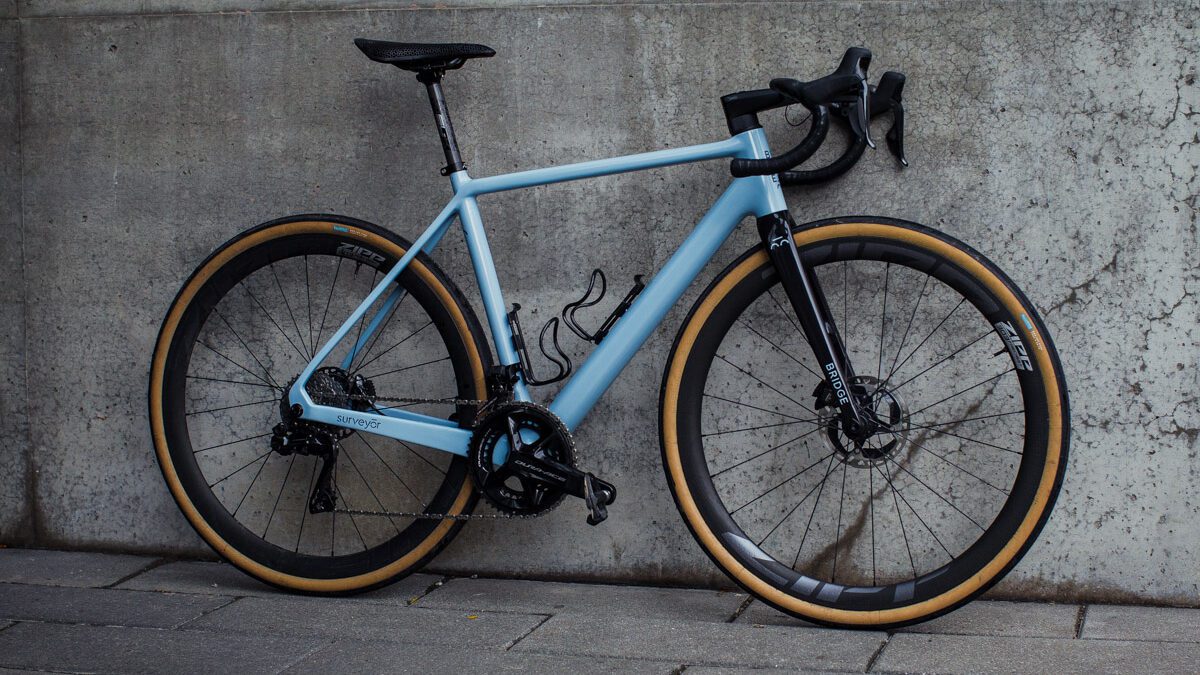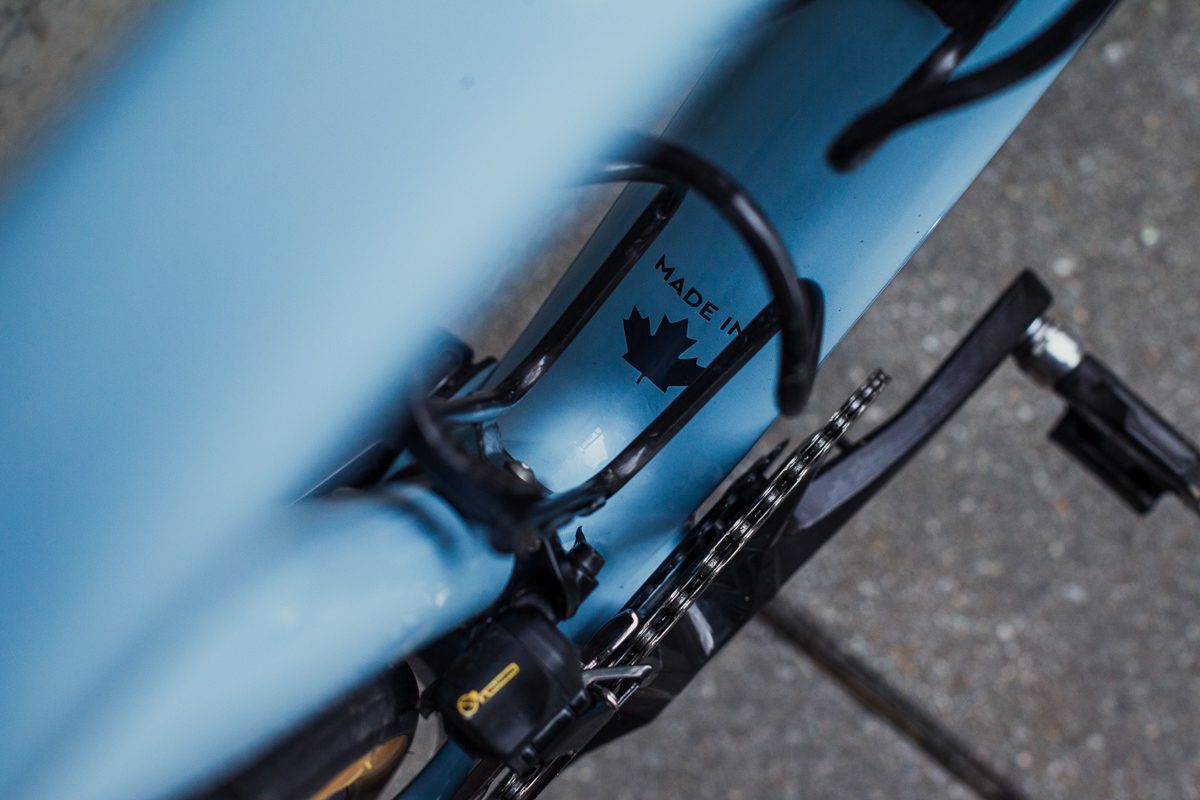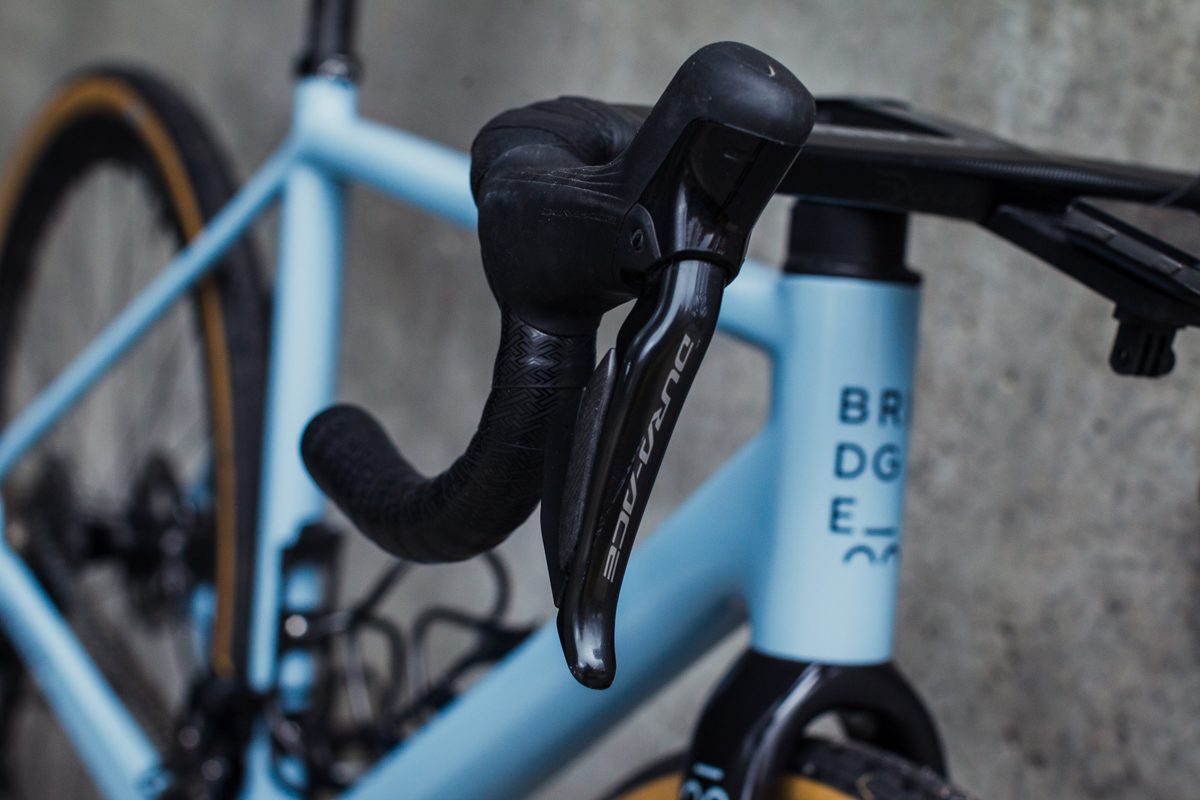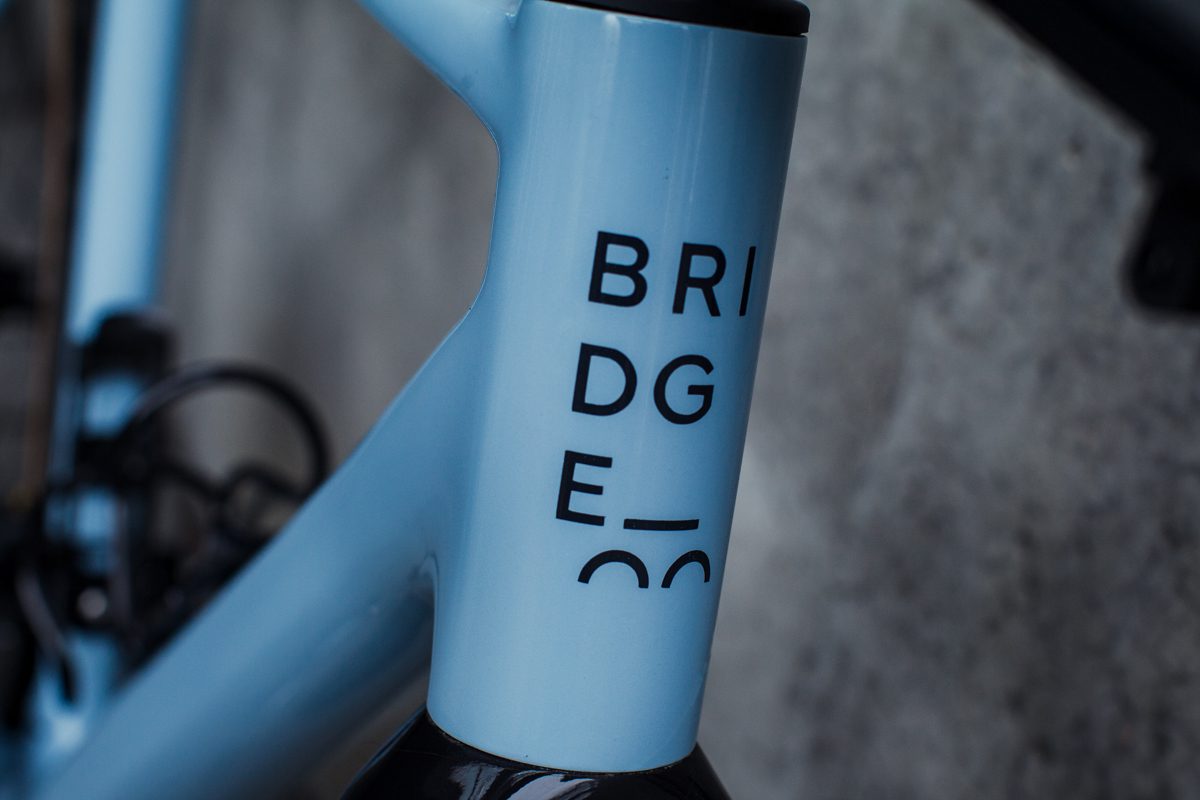Exclusive first review of the Bridge Bike Works Surveyor
The made-in-Canada bike blends lively handling with a ride quality for big days out
 Photo by:
Matt Stetson
Photo by:
Matt Stetson
I don’t think Mike Yakubowicz was exaggerating when he said he had spent hundreds of hours working on the design of his bike. He mentioned this fact while we were on a mixed-surface ride this past October, each riding a Bridge Bike Works Surveyor. Yakubowicz and his business partner Frank Gairdner started Bridge, based in Toronto, roughly three years ago. They planned to build a carbon-fibre bike in Ontario’s capital—and I mean make the whole thing, not just design it in Canada and rely on manufacturing abroad. When I visited the Bridge facility in March 2022, Gairdner, Yakubowicz and their team were working on the moulds for the Surveyor. This past fall, I got my hands on the first media test bike released by the company. It was pretty special to ride a bike that was made less than 5 km from my home.

Yakubowicz, who also runs Blacksmith Cycle, has helped many riders choose their dream machines. He’s guided them through spec choices and myriad geometry options. When it came time to design the bike that Bridge would build, Yakubowicz wrestled with all the details himself. It was similar to what his customers do, but he had a blank slate and the bike had to have a broad appeal.
The designer was after a specific set of features. “When we started the project, I would say this all-road category wasn’t represented as well as it could have been,” he said. “I think you’re now seeing more bikes like ours, which gives us a little more competition, but also says we’ve been on the right track. To speak to the big picture, you usually have your race bikes that are really quick handling, but usually don’t have more than 30 mm of tire clearance. Then you jump to more endurance-style bikes with 35 or 38 mm of clearance and that tend to have stable but slower handling. It’s like your choice has been either a race bike with little tire clearance or an endurance bike that’s not super responsive. The Surveyor is made for long days in the saddle. What makes our bike unique is the geometry and handling profile is closer to a race bike, but the tire clearance is closer to a gravel bike.”

The Surveyor can run 40c treads, so you can build it up as a capable gravel bike. (The frame came third in the open division of 2023’s Unbound Gravel race.) My bike—with full Shimano Dura-Ace Di2 gruppo and 35c Rene Herse Bon Jon Pass tires—was more road-focused. Still, I not only took it on smooth pavement, but some not-too-chunky gravel, as well. The route I planned for Yakubowicz and me did have some sections that pushed the limits of our tires. I had prepared him somewhat. (“Don’t wear road shoes for this ride,” I had said. “There will be some hike-a-bike.”)
Yakubowicz, who can talk bike geometry all day, got into details about the bottom bracket height. The frame has a slightly lower bottom-bracket drop compared with a traditional road bike. The Surveyor, in sizes 51 and 53, has a BB drop of 78 mm. On sizes 55 (my test bike), 57 and 59, it’s 80 mm. A traditional road bike is in the range of 68 to 70 mm. The low drop on the Bridge increases the bike’s stability. “It makes the bike descend really well because you feel really planted. You’re not kind of on top of the bike,” Yakubowicz said. Classic frames were designed for 23c tires. The Surveyor will be commonly outfitted with 28c treads at the narrow end to 40c at the widest. The wider you go with tires, the taller you get as well. Yakubowicz figures the lower bottom-bracket drop counters, or re-centres, the bike in relation to the bigger treads.

Bottom-bracket drop also affects pedal clearance. As the component gets closer to the ground, the likelihood of you striking your pedal increases. If you are in a twisty criterium or on a gnarly trail, pedal strike could be an issue. For Yakubowicz, designing a bike for those scenarios wasn’t a priority. “I don’t know if the Surveyor is going to have clearance for rocks, but I also believe that’s an overstated worry. Also, the stability and planted feel for 99 per cent of your riding, to me, is going to override a taller bottom bracket that could give you a tiny bit more rock-strike clearance.”
If you delve deeper into the bottom-bracket area, you’ll find something that’s on no other bike. It’s not the T47 bottom bracket, but how it connects to the frame. Usually, the T47’s cups twist into threads that are tapped into an aluminum shell, which is bonded to the carbon-fibre frame. At the 2023 edition of Sea Otter, Bridge revealed that it had moulded carbon-fibre threads directly in the frame itself. It’s an engineering first. Without the aluminum shell, Yakubowicz said there’s a weight savings of 80 g. But how durable are those carbon-fibre treads?

“We’ve done a whole bunch of saltwater corrosion testing in-house to compare an aluminum bottom bracket shell with our carbon threads,” Yakubowicz said. “The bottom line is there’s really no decrease in long-term durability. The carbon threads are actually stronger than aluminum threads.” For threads the Bridge team have managed to wreck, they’ve been experimenting with repairing them. At the time Yakubowicz and I spoke, it seemed that Bridge could repair damaged carbon-fibre BB threads, a sort of composite re-tapping.
As with most modern road bikes, the Surveyor’s bottom-bracket area is quite beefy. The same goes for the down tube, which is about 60-mm wide and has a D-shape cross-section, while the cross-section of the chainstays is rectangular. All those tubes prioritize stiffness for excellent power transfer. Yet, stiffness isn’t the Surveyor’s only quality. The top tube has a flat profile and it slopes downward as it approaches the seat tube. That setup exposes more of the round, 27.2-mm-diameter seatpost, allowing for more flex. “Our seatstays are quite thin and sort of wrapped around the seat tube to the top tube slightly,” Yakubowicz added. “We don’t have a brake bridge because we wanted those seatstays to have a good amount of flex and compliance to them.” Essentially, across the top of the frame, there’s more of a focus on comfort. “We were almost going element by element, weighing the pros and cons and trying to create a package that had a really good balance of stiffness and ride quality. For example, we don’t have a shaped seat tube for aerodynamics or an aero seatpost. Essentially, the aerodynamic gains are minimal. They also reduce simplicity and comfort, which didn’t make sense for us. If you’re building a bike for a WorldTeam rider, fine: you don’t want a round seatpost that’s a watt slower. Tadej Pogačar doesn’t want to give up even a watt.” For the rider of a Surveyor, they gain a refined balance of comfort and performance.

As I mentioned, I was lucky enough to get the first reviewer model of the new bike. More Surveyors are rolling out of the Toronto facility. This past November, there was a five-month lead time. Yakubowicz is hoping that by April or May he and his team can turn out a bike in four to eight weeks. On the company’s website, you can find a variety of builds, both road-focused and gravel. You can customize your ride. Yakubowicz gets that. After all, he’s a bike geek, too.
After I rode the bike for a few months, I could tell Yakubowicz had nailed the geometry. All those hours he had spent paid off. On the Surveyor, I could get in a position that was racy and powerful, but I was comfortable kilometre after kilometre. The bike has incredibly balanced handling—energetic, yet controlled. That behaviour comes from Bridge’s own fork, as well as the offset of the seat tube, slightly in front of the bottom bracket, keeping the chainstays to a short 417 mm.
Almost two years ago, when I first checked out the Bridge facility, I was impressed by the care and precision Yakubowicz’s business partner Frank Gairdner brought to the design of the bike’s production process. I could see just how well-made the carbon-fibre tubes were. After riding the sum of those parts, I appreciated the other work that went into the Surveyor: Yakubowicz’s ideas of what makes a great bike. It all spans one stunning machine.
Bridge Bike Works Surveyor (as tested)
Components Shimano Dura-Ace Di2 drivetrain with 50/34-tooth crankset and 11-34 tooth cassette, Deda Alanera handlebar/stem combo, Fizik Vento Argo R1 Adaptive saddle
Wheels Zipp 303 Firecrest with 35c Rene Herse Bon Jon Pass tires
Sizes (cm) 51, 53, 55, 57, 59
Price $15,260
Website bridgebikeworks.com




